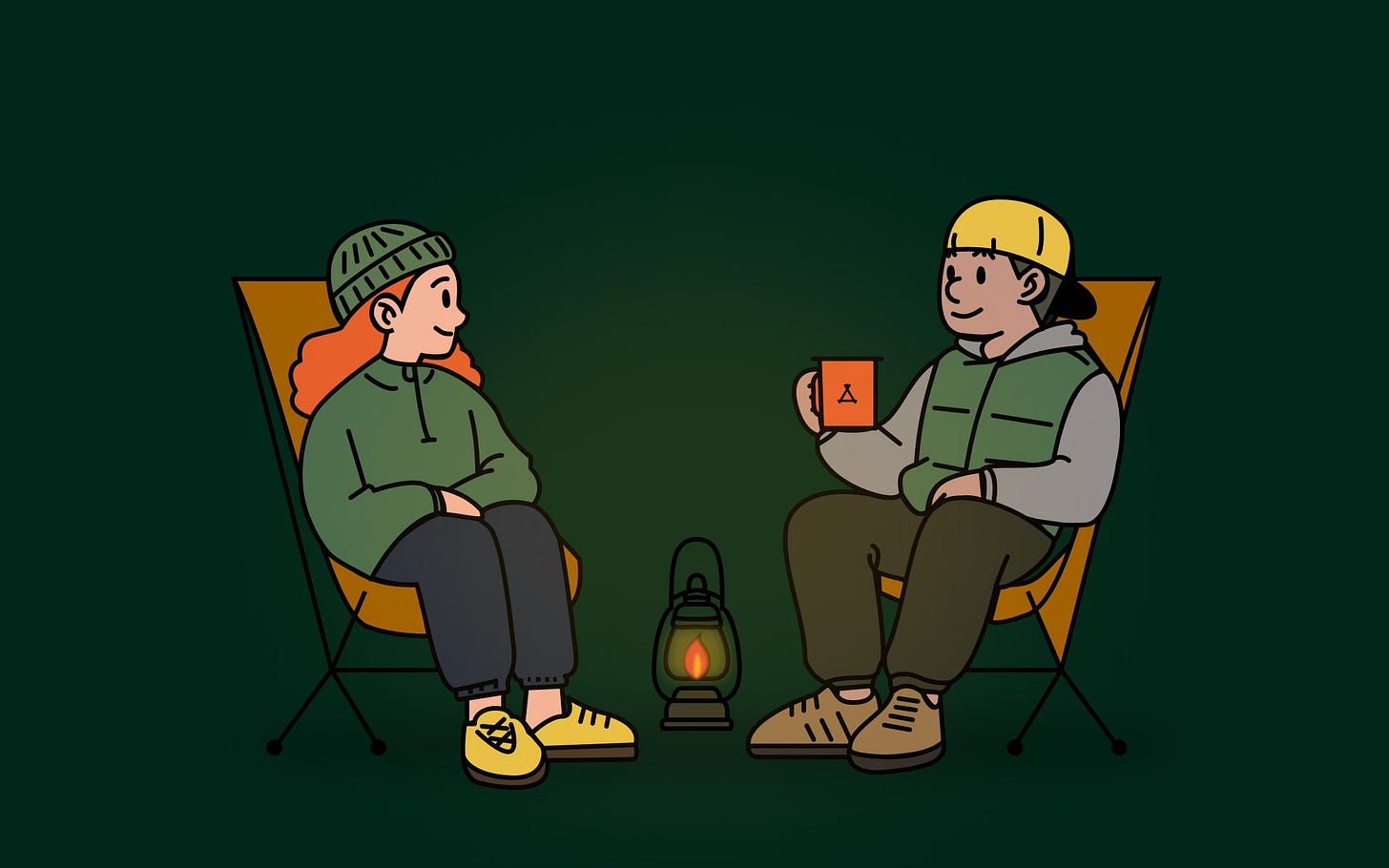3 tips for presenting your work during interview
A well-crafted and delivered presentation makes you stand out like no other.
Welcome to a spooky 👻 once-a-month-free-edition 👻 of Alex's Camp. Each week I explore design’s interplay with product, business, and technology, and answer your questions about freelancing, career, and personal growth.
When you thought a job interview was stressful enough, you've been asked to present your work as part of the process.
For real?
It should come as no surprise, given that an interview provides the potential employer with an opportunity to evaluate your skills thoroughly. Delivering a presentation lets you showcase your skills in public speaking, subject-matter expertise, ability to stay calm under stress, and more.
And that's a good thing! A well-crafted and delivered presentation makes you stand out like no other.
On the other hand, if your presentation is poor, it might seriously hurt your chances of getting the job. How do you go about making sure your presentation is flawless?
This is how you can keep the hiring manager engaged during portfolio presentations:
Don't over-contextualize
Given the complexity and intricacy of most industries, you might believe that setting the scene for your presentation is necessary. As a rule of thumb, don't use more than one slide to provide business context.
Make the most of the limited amount of time you have to provide the hiring manager with the details they need to move forward with you. Use this opportunity to exercise brevity (a great design skill).
Designers generally overestimate the amount of context required to make their argument (and hiring managers notice when you can't communicate clearly).
Talk about YOU
Employers are not attempting to hire from your former employer. Talk about YOU because they are looking to hire YOU.
Demonstrating your understanding that this is a team sport is a positive trait. However, start your presentations with the phrase, "I'm going to focus on my contributions for efficiency, even though a lot of people contributed to the success of this project."
Tell them about your struggles, choices, viewpoints, accomplishments, and losses.
Find the big story in little projects
Never undervalue the great stories you can create from tiny design projects. Yes, you may showcase your research and the pattern's historical background in a 30-minute presentation about switching out a few checkboxes for toggles.
Small design projects can serve as a great way to go further into your research methodology, thought process, and decision-making process. Saying something like, "Designing an onboarding form shouldn't be that hard, but little did I know..." and diving into the micro-drama can help establish the scene.
Speak with authority and confidence when presenting your work. Establish eye contact with various people in the audience to capture their interest and get them involved in what you're saying.
Remind yourself to take a few deep breaths from time to time. This will naturally slow your speech down (most people, including me, tend to speak quickly when giving a presentation) and help you stay calm.
Although giving a presentation can be nerve-racking, remember that your audience wants you to succeed. The hiring manager likely invited you to learn more about you because they believe you have something to offer.


